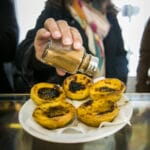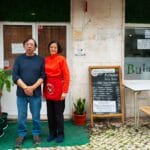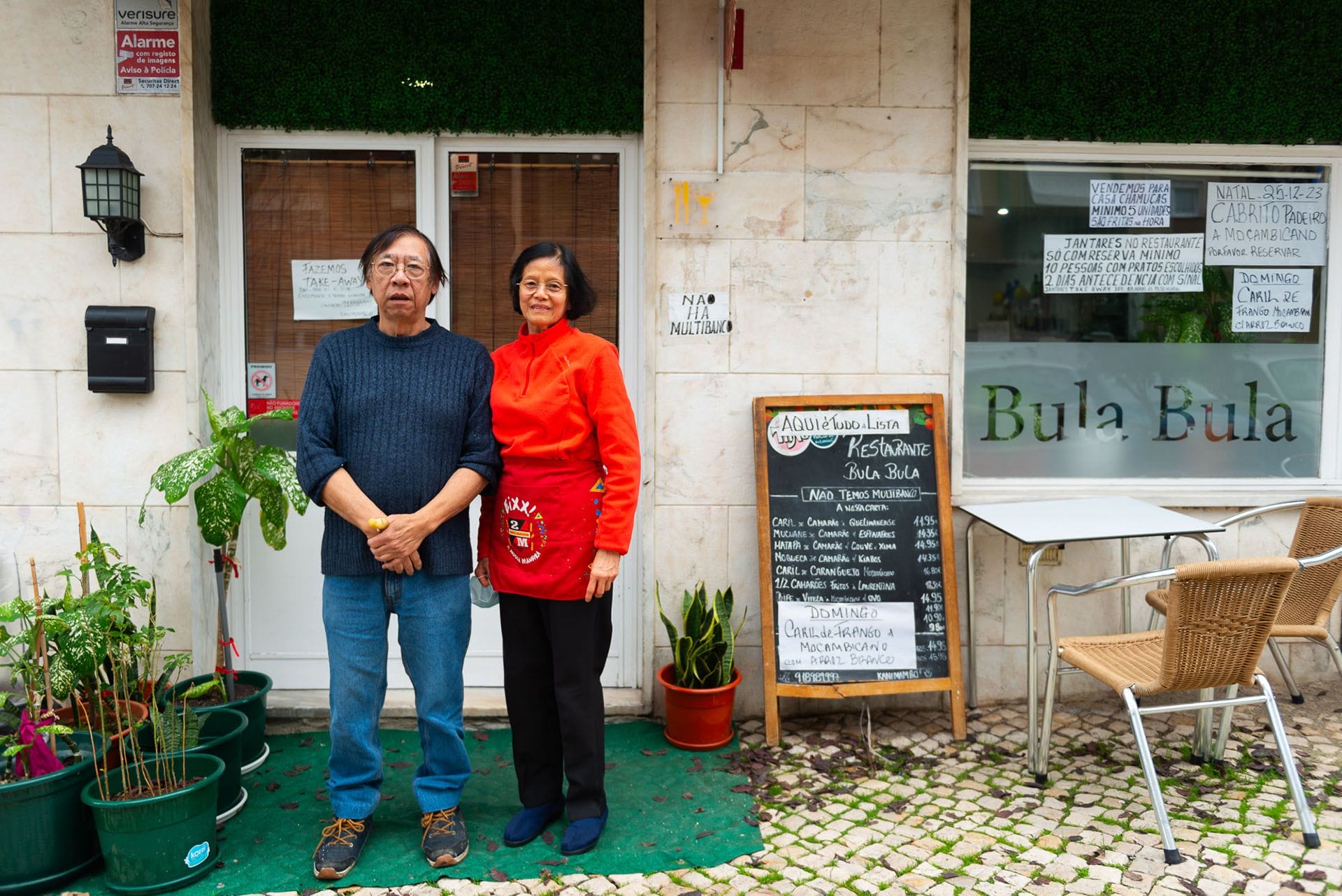We didn’t exactly receive a warm welcome at Feira do Relógio, a weekly market that unfolds along a suburban strip north of Lisbon’s city center.
“I saw you taking photos from the bridge! What are you doing?” shouted a man as he approached us aggressively. “You can’t take photos of people!”
We explained calmly that we were taking photos for an article, and that people would not feature in those images. He hassled us a bit more before eventually wandering away. Later, we saw him selling knockoff socks from a bag slung over his shoulder. The rest of our visit was event-free, but the incident was a reminder of the occasional semi-legal nature of this market.
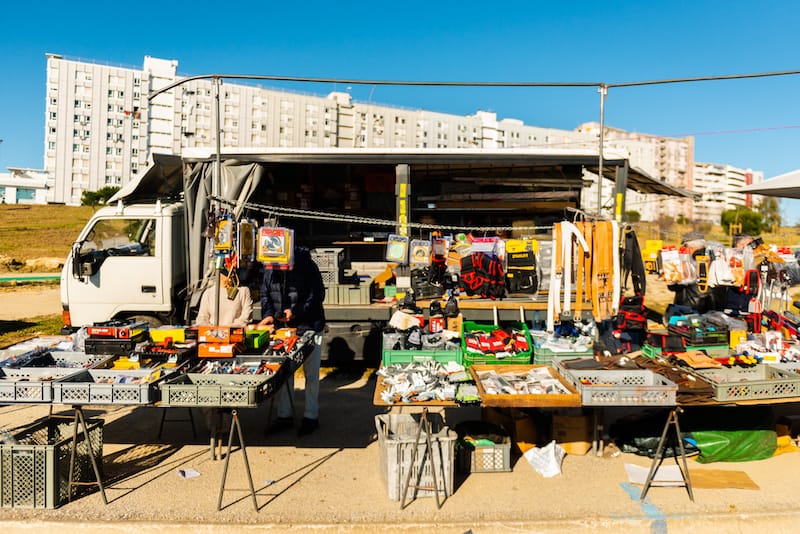
Relógio is Portuguese for “clock,” allegedly a reference to the market’s former location near a clocktower. This landmark is no longer relevant, and instead the name obliquely elicits the “fell from the back of the truck” origins of some of the goods sold there. Every Sunday between 9 a.m. and 2 p.m., dozens of vendors take over a nearly one-kilometer stretch of road in Lisbon’s Chelas area. Many work from tables but several vendors also operate from vans, almost all of which are white, their doors open, goods spilling out onto the street. The vibe is familiar to anyone who’s been to a rural fair in Portugal, with Romani sellers shouting sing-song slogans to draw buyers (“Come here! Come here! Everything for one euro!”).
Feira do Relógio is probably best known among the people of Lisbon for its knockoff clothing and accessories. Think shirts with familiar logos that are just a bit off, designer purses that will almost certainly not make it through the season, or suspiciously cheap name-brand sneakers. The fact that these are unlicensed copies is no secret, and in the past, the market has been raided by police.
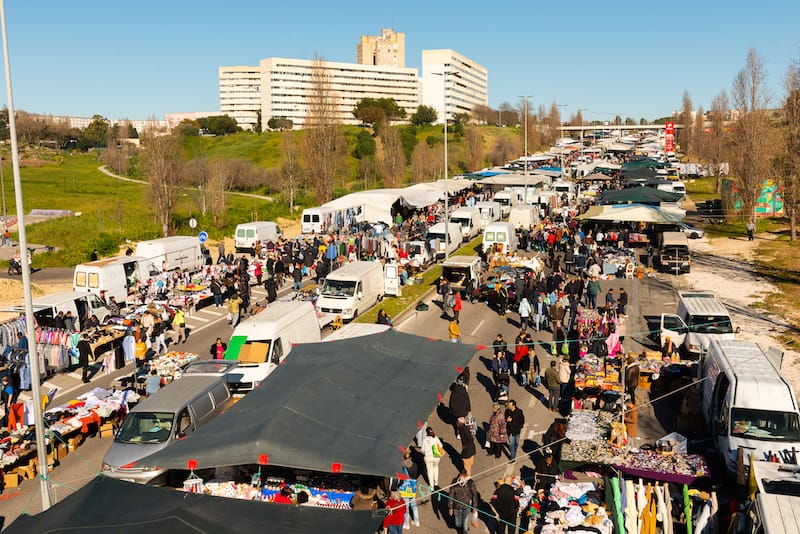
Yet for many shoppers, the market has a distinctly less illicit vibe, and among the stalls selling “Nike” sneakers you’ll also find people bargaining for items such as kitchen tools, blankets, dish soap and tools, many of these at cut-rate prices.
“In my opinion, Feira do Relógio has an important social role,” says Rui Padrão, a frequent market shopper. “It’s one of the most democratic places in Lisbon, where people with little money can buy essentials to make it through the week.”
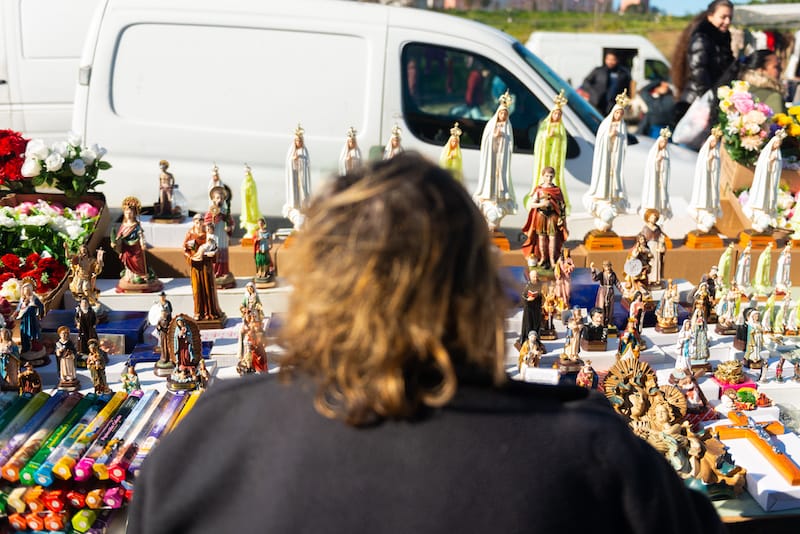
This utilitarian vibe extends to food, a draw for many shoppers, especially as inflation has caused supermarket price tags to swell. Produce vendors, often working from the ubiquitous white vans, sell the usual Portuguese staples: cabbage, bunches of cilantro, massive pumpkins, apples and pears, as well as more obscure items such as grapevine clippings. Some stalls specialize in bread and baked sweets, while others sell smoked meats and cheese. If you’re on a budget, Feira do Relógio is a great place to buy inexpensive “bag in box” wine or a four-liter bottle of olive oil.
The prices are low, in part because some of the vendors are also farmers, selling their produce directly to consumers. We eye some tiny, purple new potatoes at a truck that specializes in the tubers, and the farmer/vendor Senhora Teresa tells us, “You don’t need to peel those, they’re great like that” – the tip an added perk of this type of commerce.
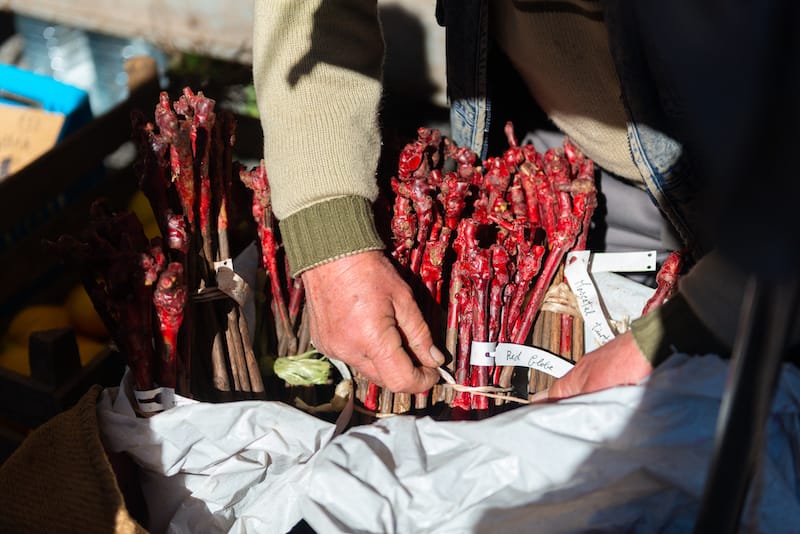
The produce sold at Feira do Relógio also reflects Chelas’s status as a predominantly immigrant neighborhood. There’s an emphasis on tropical fruit at the market, with vendors selling mangoes, papayas, cherimoyas, guavas, pineapples and dragonfruit. Items such as yams and plantains are abundant and common. One stall specializes in ingredients and produce from the island nation of Cabo Verde, with bags of cornmeal and beans, bottles of grog (a type of rum), arm-length sticks of sugarcane and tiny but intensely spicy gindungo chilies.
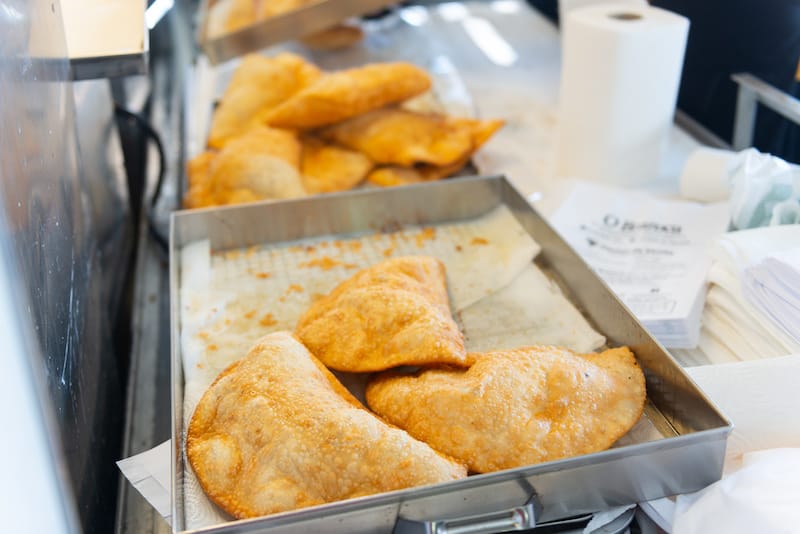
Prepared food is also a draw at Feira do Relógio, with several mobile restaurants selling bifanas (Portugal’s famous pork sandwich), hamburgers and other indulgent dishes. But hands-down the most popular destination for a meal or snack is O Brazuca, a Brazilian-run operation that specializes in deep-fried dishes and fresh sugarcane juice. From one truck, staff squeeze cups of fresh sugarcane juice using a mechanical press, while from another they crank out virtually the entire spectrum of deep-fried Brazilian snacks – kibe, coxinhas, bolinhas de queijo. But the majority of patrons come for pastel de vento, a thin, flaky, rectangular, deep-fried pastry shell the size of a knock-off Gucci purse that contains finely minced beef or gooey cheese. The stall is a gathering place for Lisbon’s Brazilian community, who taught us that pastéis do vento require generous squirts of ketchup and/or mayonnaise.
In the end, our initial run-in meant that we didn’t take as many photos as we would have liked. But leaving the market with a bag of potatoes, some spicy chilies and a belly full of Brazilian specialties, it struck us that with its food trucks, farmer’s market ethos and multiculturality, Feira do Relógio is a market that is, despite our first impression, well ahead of the curve.
Austin BushAustin Bush
Published on March 24, 2023
Related stories
April 4, 2024
LisbonQuick Bite: On this food tour in Lisbon, we’ll experience a cultural feast, tasting some of the most diverse bites of the city’s gastronomy and meeting the people behind them. The oldest city in Western Europe, once the hub of a trading empire that connected Macau in the east to Rio de Janeiro in the…
February 23, 2024
LisbonMozambican, Portuguese and Cantonese – with a fair bit of Indian thrown in. On the surface, it’s an utterly unlikely culinary mashup. But it makes perfect sense at Bula Bula, a restaurant on Lisbon’s northern outskirts. The husband-and-wife owners of Bula Bula, Ana Lee and Fernando Ho, are ethnic Chinese who can trace their ancestry…
July 13, 2023
LisbonWe’re in a small café in Lisbon’s Madragoa neighborhood, and all of the disparate dishes loading down the table in front of us – small bread-like balls, a dish that resembles a small crepe, granola studded with flakes of grains, a pudding-like dessert – have one ingredient in common: cassava. “Cassava is known as the…













































